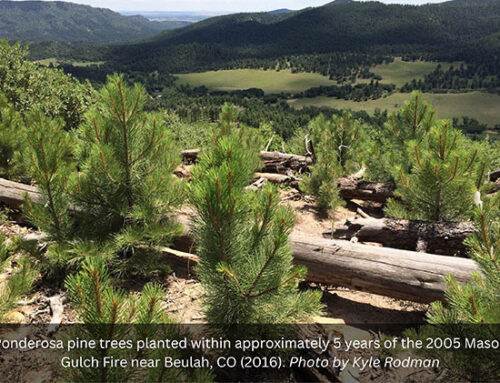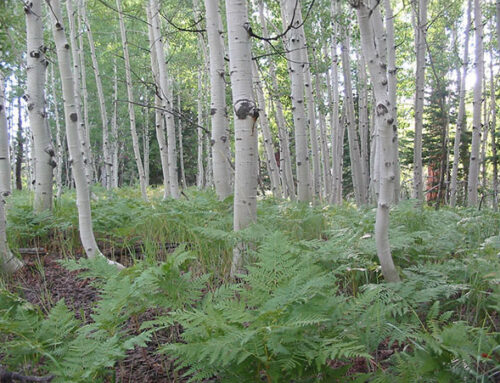Refuge-yeah or Refuge-nah?
A new study in the journal Global Change Biology shows that the most important places on the landscape after a wildfire are the places where trees survived, known as refugia.
The article titled, “Refuge-yeah or refuge-nah? Predicting locations of forest resistance and recruitment in a fiery world,” was led by scientists at the Ecological Restoration Institute in collaboration with Colorado Forest Restoration Institute, U.S. Forest Service, Western Colorado University, and The Nature Conservancy.
Refugia are relatively stable parts of the landscape that can provide seed sources and promote forest recovery. They can also help in planning networks of protected habitat for wildlife species that rely on forests or prioritizing activities like forest restoration.
To attempt to predict the locations of refugia in future fire events, researchers used patterns of burn severity and daily burn progression maps from over 1,000 fire events throughout the US Southwest. They also leveraged data from a recent large synthesis paper to better understand which of these locations would be likely to support post-fire tree recruitment into adjacent areas.
Some key findings:
- The study showed that areas with low pre-fire forest cover, flatter slopes, or in valley bottoms were commonly associated with refugia.
- Weather during the day of burning plays a major role in where trees survive fire.
- Recruitment potential is greatest at the wetter end of species ranges and varies heavily based on the tree species composition of existing communities. Some places will remain suitable for existing species, and others may already be unsuitable.
- Previous low- to moderate-severity fires substantially increased the likelihood of tree survival in subsequent fires for at least 15 years. Prescribed fire, cultural burning, and managed wildfire are critical management tools to promote more fire-resistant landscapes.
Data from the study are available online via Data Dryad and can also be viewed in this web application




